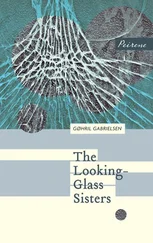The experts at the Inter-American Development Bank, who can translate life and death into dollars and cents, calculate that Latin America loses $168 billion a year to crime. We are winning the World Cup of crime. Latin America’s murder rate is six times the world average. If the economy only grew like crime, the region would be the most prosperous on the planet. Peace in El Salvador? What peace? At the rate of a murder an hour, El Salvador is keeping pace with the worst years of the war. Kidnapping is the most lucrative industry in Colombia, Brazil, and Mexico. In our large cities, no one would be considered normal if he hadn’t been mugged at least once. There are five times as many murders in Rio as in New York. Bogotá is the capital of violence, Medellín the city of widows. Elite cops, members of “special groups,” have begun to patrol the streets of some Latin American cities outfitted from head to toe for World War III. They have infrared night visors, headphones, microphones, and bulletproof vests; on their belts they carry pepper spray and bullets; an automatic rifle is in their hands and a pistol on their thighs.
Typical Scenes from Latin America
States stop running businesses and concentrate on running jails.
Presidents become local managers of foreign companies.
Finance ministers make good translators.
The captains of industry become importers.
The many more depend more and more on the leftovers of the ever-fewer few.
Workers lose their jobs.
Peasants lose their plots.
Children lose their right to be children.
Youth lose the capacity to believe.
Old folks lose their pensions.
“Life is a lottery,” say the winners.
Of every hundred crimes committed in Colombia, ninety-seven are never solved. The proportion is similar in the barrios of Buenos Aires, where the police spend most of their time committing crimes and killing young people. From 1983, when democracy was restored, to the middle of 1997, the police blew away 314 suspicious-looking boys. In the course of a police shake-up at the end of 1997, the press discovered that nobody knew what five thousand officers on the payroll did or where they were. Polls showed that few Argentines or Uruguayans would turn to the police if they had a serious problem. Six out of ten Uruguayans favored taking justice into their own hands, and some had signed up for shooting lessons.

In the United States four out of every ten people admit to having changed their routines because of crime, and south of the Rio Grande people talk about muggings and robberies as much as about soccer or the weather. The public opinion industry throws oil on the fire, doing its best to turn public security into public obsession, but the fact is, reality does more. Reality assures us that violence is rising even faster than the statistics confess. In many countries people don’t report crimes, because they don’t trust the police or they fear them. The Uruguayan papers call gangs that pull off spectacular robberies “supergangs,” and those who have police officers among their members are called “poligangs.” Of every ten Venezuelans, nine believe the police commit crimes. In 1996, the majority of Rio de Janeiro’s finest admitted that they had been offered bribes, while their chief said that “the police were created to be corrupt” and that a society “that wants corrupt and violent police” is to blame.
An internal police report leaked to Amnesty International shows that six out of every ten crimes in Mexico City are committed by the police. To catch a hundred criminals in a year, it takes 14 police in Washington, 15 in Paris, 18 in London, and 1,295 in Mexico City. “We have allowed the police to become excessively corrupt,” the mayor of that city admitted in 1997. “Excessively?” asked the ever-curious Carlos Monsiváis. “What’s wrong with them? Are they corrupt or are they getting away with honesty? Put them to work.”
At century’s end, everything is becoming globalized and everything is becoming alike: clothes, food, the lack of food, ideas, the lack of ideas, and crime, too, not to speak of the fear of crime. Throughout the world, crime is rising faster than the numbers can sing, even though they sing with gusto. Since 1970, reported crimes have grown three times faster than the world’s population. In Eastern Europe, while consumerism buried Communism in the 1990s, daily violence multiplied at the same rate that wages fell: by three in Bulgaria, the Czech Republic, Hungary, Latvia, Lithuania, and Estonia. Organized and disorganized crime have taken over Russia, where juvenile crime is flowering as nowhere else. The kids who wander the streets of Russian cities are called “the forgotten”; “We have hundreds of thousands of homeless children,” admitted President Boris Yeltsin.
At the end of 1997, terror of assaults was written into law in most eloquent fashion in Louisiana, where drivers were authorized to kill anyone who tried to rob them, even if the crook was unarmed. This no-holds-barred approach was then promoted on TV thanks to the toothy smile of the reigning Miss Louisiana. Meanwhile the popularity of New York mayor Rudolph Giuliani rose spectacularly when he hit criminals hard with a “zero tolerance” policy. The crime rate dropped in the same measure as charges of police brutality rose. Beastly repression, a magic potion adored by the media, fell savagely on blacks and the other “minorities” that make up the majority of New York’s residents. “Zero tolerance” quickly became a beacon for Latin America’s cities.
Presidential elections in Honduras, 1997: crime is the key issue in the speeches of all the candidates, every one of whom promises security to a people cowering in fear. Legislative elections in Argentina, the same year: candidate Norma Miralles comes out for the death penalty, but not if it’s painless: “It’s no big deal to kill a condemned man, because he doesn’t suffer.” Not long before, Rio de Janeiro mayor Luiz Paulo Conde said he preferred life sentences or forced labor, because the death penalty has the drawback of being “a very quick thing.”
But no law can stop the invasion of those who live outside the law. The frightened only multiply in number, and they can be more dangerous than the danger that frightens them. Not only do the hustlers and spongers who live in prosperity feel threatened, so do many who survive in scarcity, poor people who suffer the attacks of people poorer or more desperate than themselves. “Frenzied Mob Burns Child Alive for Stealing an Orange,” reads the headline. The blind fury of poor against poor: between 1979 and 1988 the Brazilian press reported 272 lynchings by people who had no money to pay the police to do the job for them. Poor, too, were those responsible for the 52 lynchings that occurred in Guatemala in 1997 and the 166 lynchings between 1986 and 1991 in Jamaica. During those same five years, quick-triggered Jamaican police killed over a thousand suspects. A poll found that a third of the population believed delinquents should be hanged, since neither street vengeance nor police violence did the trick. Polls in 1997 in Rio de Janeiro and São Paulo revealed that more than half the people considered lynching criminals to be “normal.”
A good part of the population also openly or discreetly applauds the death squads that mete out capital punishment even when it’s against the law and do so with the participation or complicity of the police and the military. In Brazil they started by killing guerrillas. Then they moved on to adult criminals, later to homosexuals and panhandlers, and finally to teenagers and children. Silvio Cunha, the president of a merchants’ association in Rio, said in 1991, “Killing a young slum dweller is a service to society.” The owner of a shop in the barrio of Botafogo was robbed four times in two months. A policeman explained why: there’s no point arresting children today, since the judge will set them free to rob tomorrow. “It’s up to you,” the policeman said. And for a reasonable price he offered to take care of things when he was off-duty, “to get rid of them,” he said.
Читать дальше












